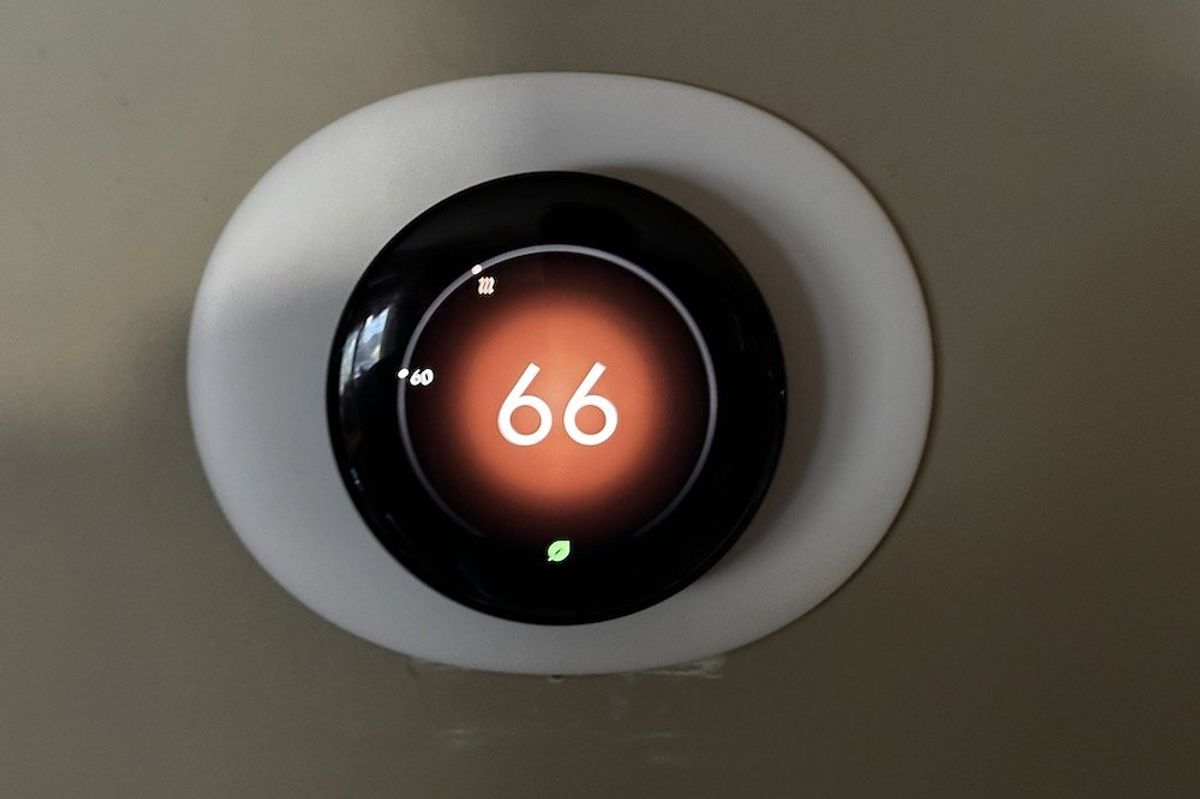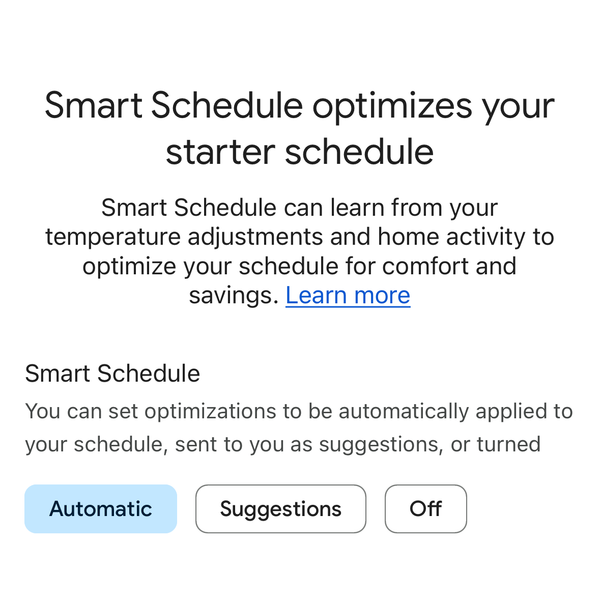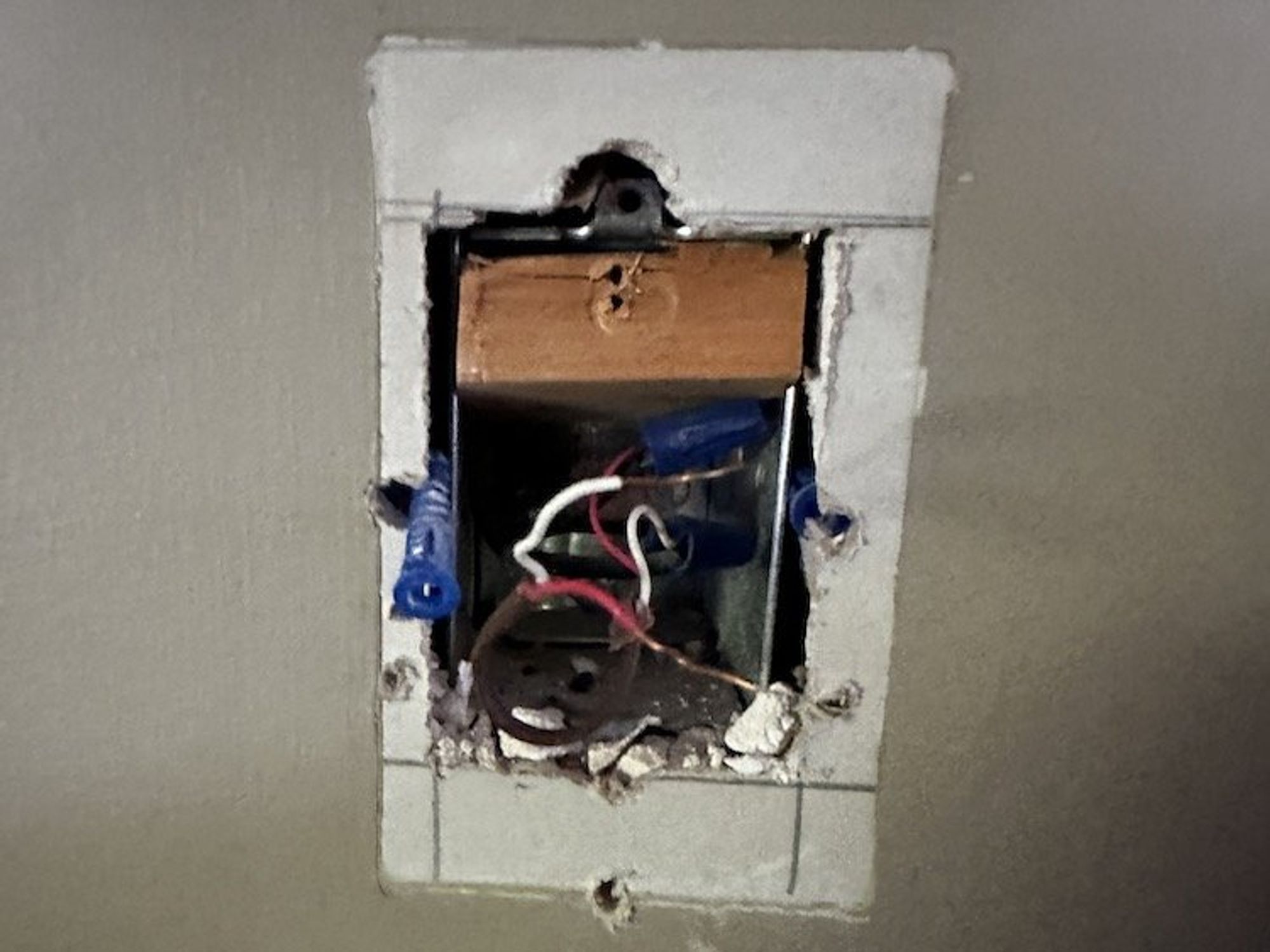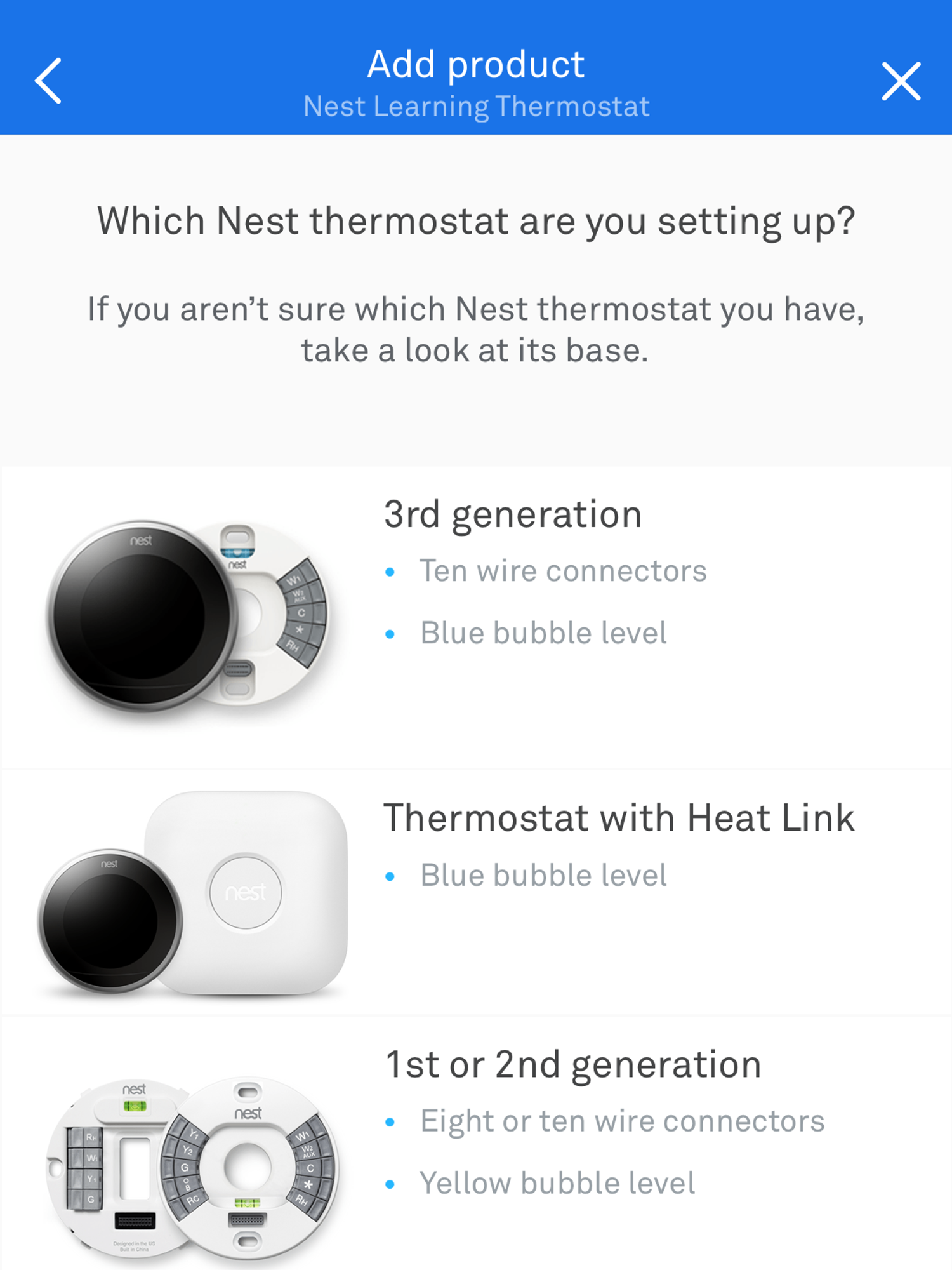Thermostats

GearBrain
Google Nest Learning Thermostat Review: AI-Powered Efficiency
Discover how Google Nest's 4th Gen Learning Thermostat and Temperature Sensor use AI to optimize home comfort and save on energy bills.

Discover how Google Nest's 4th Gen Learning Thermostat and Temperature Sensor use AI to optimize home comfort and save on energy bills.
As the weather changes, smart homeowners start looking for ways to save money on their energy bills. A smart thermostat is one smart device that helps you save money on your heating and cooling bills. Over the past several years, I have tested many of these thermostats and gained insight into the pros and cons of installing one in your home. I have seen new ones come to market with effective smart features like geofencing and automatic scheduling based on our whereabouts. Today, a new feature we are starting to see emerge in smart thermostats is artificial intelligence (AI). This new technology is still in its infancy and will take time to learn before users can benefit from its capabilities. I was lucky to get Google Nest's latest smart thermostat with AI, called Google Nest Learning Thermostat (4th Gen), and Nest Learning Sensor (2nd Gen). Here's my review.

The Google Nest Learning Thermostat (4th Gen) redefines smart home comfort with advanced energy-saving intelligence, a sleek aesthetic, and the brand-new Nest Temperature Sensor (2nd Gen) included in the box Available in three elegant finishes—polished Silver, Polished Obsidian, and Polished Gold—this thermostat combines sophisticated design with robust functionality, making it an essential centerpiece in any modern smart home.

At the core of the Nest Learning Thermostat is Google's Gemini AI, which optimizes your home's heating and cooling system by making micro-adjustments based on your daily patterns. This AI-powered learning capability maximizes comfort and saves energy costs by automating temperature schedules tailored to your lifestyle. With Smart Schedule, the thermostat tracks the temperatures you prefer at different times and learns to anticipate adjustments based on motion detected in your home—such as returning home earlier than expected. The Google Home app can effortlessly adjust or accept these energy-saving schedules.

The Dynamic Farsight feature allows you to customize the thermostat's home screen with relevant details—such as the time, temperature, weather, or outdoor air quality—that are easily visible up close or at a distance. This new display is a 60% larger, borderless domed crystal LCD that enhances readability and integrates multiple layers of mirror and colored films, eliminating the appearance of bezels and adding a timeless touch to your home.
Starting October 13, 2025, new Farsight faces began rolling out on the Nest Learning Thermostat (4th Gen), offering users more ways to personalize their display. The new faces include a range of designs—from minimalist to classic Nest faces—as well as a monthly seasonal piece of art created in collaboration with artist Mathilde Loubes.

The redesigned Nest Temperature Sensor (2nd Gen) helps you manage temperature fluctuations in your home by allowing you to prioritize specific rooms. With its compact, pebble-like design, this sensor can be conveniently placed on a shelf or mounted on the wall, seamlessly blending into any room. You can add up to six Nest Temperature Sensors per thermostat, giving you ultimate control over the climate in multiple spaces. With compatibility across all generations, these sensors pair effortlessly with the Nest Learning Thermostat (4th Gen) to create a perfectly balanced home environment.

The Nest Learning Thermostat has eco-conscious features that deliver tangible energy savings. With Adaptive Eco and Seasonal Savings, the thermostat can adjust your home's climate to maximize natural heating or cooling, depending on the time of year. It even accounts for the outdoor weather in its calculations, meaning it can boost efficiency on particularly hot or cold days. Smart Ventilation settings enhance air quality and help regulate humidity, giving you a healthier, more comfortable living space. And with Nest Renew, you can take advantage of clean energy initiatives to further reduce your carbon footprint.

Designed to work with most HVAC systems, the Nest Learning Thermostat is compatible with additional devices like ventilators, humidifiers, and dehumidifiers, offering expansive control over your climate. Plus, its Power Sharing technology often eliminates the need for a C-wire, making installation straightforward in most homes. However, for complete assurance, Google provides an online compatibility checker to confirm if your HVAC setup needs a C-wire.
Through the Google Home app, you can fully remote control the thermostat and connected temperature sensors. You can adjust settings, set schedules, or check on your home's climate from anywhere. With voice control compatibility, you can manage the thermostat hands-free using smart speakers and displays.
The Nest Learning Thermostat (4th Gen) has a two-year warranty, ensuring convenience and peace of mind.
In summary, the Google Nest Learning Thermostat (4th Gen) and Nest Temperature Sensor (2nd Gen) combine cutting-edge design, AI-driven energy efficiency, and customizable control for an elevated smart home experience. With options to manage hot or cold spots, automated comfort settings, and stylish finishes, it's an investment in your home's energy efficiency and comfort.

Based on our experience, installing the Nest Learning Thermostat (4th Gen) and Nest Temperature Sensor (2nd Gen) is straightforward and requires some basic DIY skills. However, since this process involves handling electrical wiring, it is essential to follow each step carefully and consider watching an installation video on the Google Nest site or the Google Home app before beginning. Here is a step-by-step guide to help you install your new thermostat and sensor confidently.
Before doing anything, locate the breaker that controls your HVAC system and turn off the power. This step ensures safety by preventing accidental electrical shocks while working with wiring.

Carefully remove your current thermostat, noting the wiring as you go. Once removed, check your HVAC system's wiring to see if it's compatible with the Nest Learning Thermostat (4th Gen). To make this easy, use the Google compatibility checker in the Google Home app or on Google's website. This tool confirms if your wiring setup is compatible or if it requires a C-wire to power the new thermostat.
If your system is compatible, the Google Home app will guide you through the setup process. Before you begin the physical installation, it is highly recommended that you watch the installation video on the Google Nest site or in the app. This video helps you evaluate whether you feel comfortable handling the installation yourself or hiring a professional would be best.

The last step is to turn on the power and program your new Nest Learning Thermostat in the Google Home app. If you plan to use voice commands with a compatible smart speaker or display for control, make sure you provide an easy-to-say name.
These steps will help you safely install your Nest Learning Thermostat (4th Gen) and Nest Temperature Sensor (2nd Gen), setting you up for an energy-efficient and comfortable smart home experience.
The new Nest Learning Thermostat 4th Gen and Temperature Sensor (2nd Gen) costs $279.99 and is available on Google Store, Amazon, The Home Depot, and most major online retailers.
Is this a good or reasonable price for a smart thermostat with a temperature sensor? At $279.99, the Nest Learning Thermostat (4th Gen), bundled with the Nest Temperature Sensor (2nd Gen), is reasonably priced for the value it offers. This package provides a sophisticated, AI-driven thermostat with cutting-edge energy-saving features that could help users reduce utility bills over time, making it a worthwhile investment. The price reflects the advanced technology, sleek design, and Google's Gemini AI, which learns and adapts to your routines for optimal comfort and efficiency While there are cheaper smart thermostats on the market, few offer this level of customization, compatibility with multiple HVAC systems, and additional temperature management for hot and cold spots through the temperature sensor Overall, the $279.99 price is justified by the product's capabilities, long-term savings potential, and the convenience it brings to smart home management.

After three months of testing the new Google Nest Learning Thermostat (4th Gen) with the Nest Temperature Sensor (2nd Gen), here are my key takeaways on its design, functionality, and value:
Positive Feedback:

Negative Feedback:

Since I only tested the smart thermostat for a few months, I thought it would be helpful to see what users say about the new Google Nest Learning Thermostat (4th Gen) and Nest Temperature Sensor (2nd Gen). Users have mixed opinions on the Nest Learning Thermostat (4th Gen) and Nest Temperature Sensor (2nd Gen), praising its design and features but expressing frustrations with the functionality. Many are impressed by the thermostat's stunning, high-end appearance, calling it "wall jewelry" and appreciating its 3D-like screen, vibrant finish, and mushroom-style design, making it an attractive home feature. Users also find it easy to install, with helpful app guidance and compatibility for multiple home setups, and they enjoy its seamless integration with the Google Home app for remote temperature control.
However, some users are frustrated by certain limitations and bugs. Frequent complaints include the difficult-to-read display, as it can be too dim and lacks color indicators for heating and cooling. Several users prefer the older Nest app over the Google Home app, which they find less intuitive and sometimes glitchy. A few users report issues with system compatibility and sensor connectivity, as well as HVAC malfunctions and problems recognizing additional sensors, especially in zoned setups. While new users and design enthusiasts rate the product highly, long-time Nest users feel the 4th Gen's improvements don't always justify an upgrade and suggest software and functionality updates could improve the experience.

The Google Nest Learning Thermostat (4th Gen) and Nest Temperature Sensor (2nd Gen) are well-suited for users invested in the Google ecosystem, especially those who appreciate a striking design and are focused on energy savings. This thermostat's AI learns usage patterns to improve efficiency, though it requires time to optimize fully. It's ideal for users who want a visually prominent thermostat, have homes with uneven room temperatures, and have modern HVAC systems that may not need a C-Wire, simplifying installation.
However, this thermostat and sensor set are pricier, which may concern cost-conscious buyers, especially with similar devices at lower prices. Also, long-time Nest users should be aware of the transition to the Google Home app, which is now required. Those already comfortable with Google Home and seeking long-term energy savings through smart home automation would likely benefit most from this smart thermostat.
In summary, the Nest Learning Thermostat (4th Gen) and Temperature Sensor (2nd Gen) are ideal for users who value aesthetic appeal and smart AI-driven energy savings and are already immersed in the Google ecosystem. They're also beneficial for homes with uneven temperatures or newer HVAC setups without a C-Wire, though the high price and app transition are factors to weigh.
Pro
Cons
Check out The GearBrain, our smart home compatibility find engine. It can help you find, buy, and connect any smart device. It can even help you find other smart thermostats, devices, or systems compatible with your existing smart devices, such as Google Assistant and Amazon Alexa-enabled devices.
GearBrain Compatibility Find Engine
A pioneering recommendation platform where you can research,
discover, buy, and learn how to connect and optimize smart devices.
Join our community! Ask and answer questions about smart devices and save yours in My Gear.
